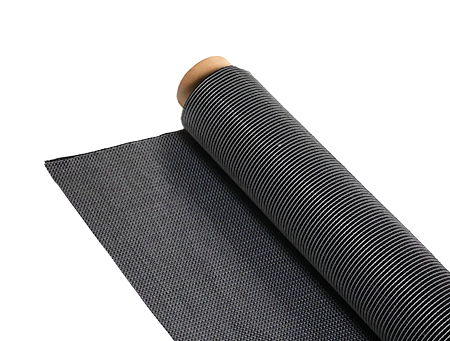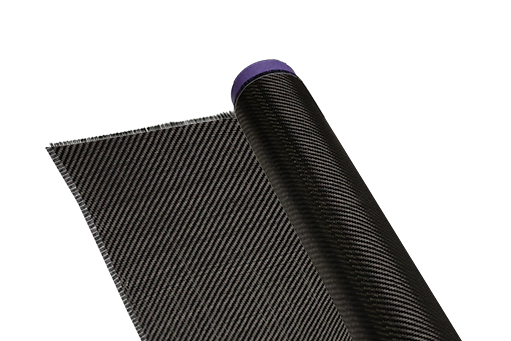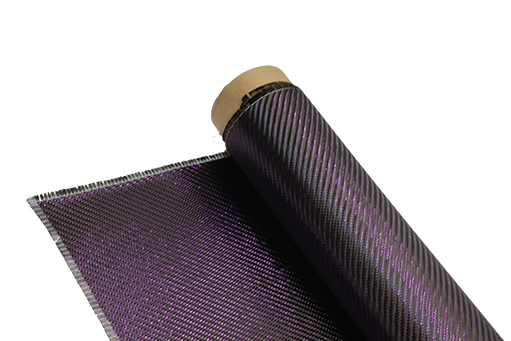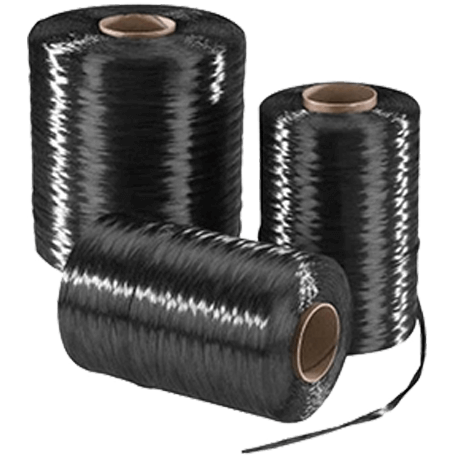What Safety Gear Uses Carbon Kevlar for Impact Resistance?
-
Table of Contents
“Unyielding Protection: Carbon Kevlar Safety Gear for Ultimate Impact Resistance.”
Introduction
Carbon Kevlar is a high-performance material known for its exceptional strength and lightweight properties, making it an ideal choice for various safety gear designed to provide impact resistance. This advanced composite combines the durability of Kevlar fibers with the rigidity of carbon fibers, resulting in protective equipment that can withstand significant force while maintaining flexibility and comfort. Common applications of Carbon Kevlar in safety gear include motorcycle and automotive racing suits, protective gloves, helmets, and body armor. These products are engineered to enhance safety for professionals in high-risk environments, ensuring maximum protection without compromising mobility.
Carbon Kevlar in Motorcycle Gear: Enhancing Rider Safety
Carbon Kevlar, a composite material that combines the strength of Kevlar with the lightweight properties of carbon fiber, has emerged as a pivotal innovation in the realm of motorcycle gear. This advanced material is increasingly being utilized in various safety equipment designed to enhance rider protection, particularly in high-impact scenarios. As motorcycle riding inherently involves risks, the integration of Carbon Kevlar into gear such as jackets, pants, gloves, and protective armor represents a significant advancement in rider safety.
One of the primary benefits of Carbon Kevlar is its exceptional impact resistance. When a rider is involved in an accident, the gear worn can be the difference between minor injuries and severe trauma. Traditional materials, while offering some level of protection, often fall short in terms of durability and weight. In contrast, Carbon Kevlar provides a robust barrier against abrasions and impacts, effectively dissipating energy upon contact. This characteristic is particularly crucial in motorcycle jackets and pants, where the likelihood of sliding along the pavement during a fall is high. By incorporating Carbon Kevlar into these garments, manufacturers can create protective layers that not only withstand the rigors of a crash but also remain comfortable and lightweight for the rider.
Moreover, the versatility of Carbon Kevlar allows for its application in various forms of protective gear. For instance, gloves made with this composite material offer enhanced grip and dexterity while ensuring that the hands are well-protected against impacts and abrasions. The fingers and palms, which are often the first points of contact in a fall, benefit significantly from the added strength of Carbon Kevlar. This means that riders can maintain control of their motorcycles while also having peace of mind regarding their hand protection.
In addition to gloves and outerwear, Carbon Kevlar is also utilized in the production of protective armor that can be inserted into jackets and pants. This armor is designed to absorb and disperse impact forces, further enhancing the overall safety of the gear. The lightweight nature of Carbon Kevlar means that this armor does not add significant bulk, allowing for a more streamlined fit that does not hinder mobility. As a result, riders can enjoy a greater range of motion while still being adequately protected.
Furthermore, the incorporation of Carbon Kevlar into motorcycle gear aligns with the growing emphasis on safety standards within the industry. As riders become more aware of the importance of protective equipment, manufacturers are responding by developing gear that not only meets but exceeds safety regulations. The use of Carbon Kevlar is a testament to this commitment, as it represents a proactive approach to rider safety. By investing in gear made with this advanced material, riders can significantly reduce their risk of injury in the event of an accident.
In conclusion, the integration of Carbon Kevlar into motorcycle gear marks a significant leap forward in enhancing rider safety. Its unique combination of lightweight properties and exceptional impact resistance makes it an ideal choice for various types of protective equipment. As the motorcycle community continues to prioritize safety, the adoption of Carbon Kevlar in jackets, gloves, and armor will undoubtedly play a crucial role in safeguarding riders on the road. By choosing gear that incorporates this innovative material, riders can ride with confidence, knowing they are equipped with some of the best protection available.
The Role of Carbon Kevlar in Sports Protective Equipment

Carbon Kevlar, a composite material renowned for its exceptional strength and lightweight properties, plays a pivotal role in the realm of sports protective equipment. This innovative material combines the durability of carbon fiber with the resilience of Kevlar, resulting in a product that offers superior impact resistance while maintaining flexibility and comfort. As athletes engage in high-intensity activities, the need for reliable protective gear becomes paramount, and Carbon Kevlar has emerged as a preferred choice for various sports.
In contact sports such as football, hockey, and rugby, athletes are frequently exposed to high-impact collisions. Traditional protective gear, while effective to some extent, often falls short in terms of weight and comfort. The integration of Carbon Kevlar into helmets, shoulder pads, and other protective gear addresses these concerns. For instance, helmets constructed with Carbon Kevlar not only provide enhanced protection against concussive forces but also reduce the overall weight, allowing athletes to maintain agility and performance without compromising safety. This balance between protection and mobility is crucial, as it enables athletes to perform at their best while minimizing the risk of injury.
Moreover, the use of Carbon Kevlar extends beyond just helmets and pads. In sports like cycling and motorsports, where the risk of falls and crashes is significant, protective gear such as gloves, suits, and body armor made from this composite material offers an additional layer of safety. The impact resistance of Carbon Kevlar helps absorb and dissipate energy during a fall, thereby reducing the likelihood of serious injuries. Cyclists, for example, benefit from gloves that not only provide grip but also protect against abrasions and impacts, ensuring that they can navigate challenging terrains with confidence.
Transitioning to individual sports, such as martial arts and extreme sports, the application of Carbon Kevlar is equally noteworthy. In disciplines like mixed martial arts (MMA) and skateboarding, where falls and strikes are commonplace, protective gear such as shin guards, chest protectors, and padded shorts made from Carbon Kevlar can significantly enhance safety. These items are designed to withstand high-impact forces while allowing for a full range of motion, which is essential for athletes who rely on agility and speed. The lightweight nature of Carbon Kevlar ensures that athletes remain unencumbered, enabling them to execute techniques and maneuvers effectively.
Furthermore, the versatility of Carbon Kevlar allows for customization in protective gear design. Manufacturers can tailor the thickness and layering of the material to suit specific sports and individual preferences, ensuring that athletes receive the optimal level of protection without sacrificing comfort. This adaptability is particularly important in sports where the intensity and nature of impacts can vary widely, necessitating gear that can respond to different levels of force.
In conclusion, the role of Carbon Kevlar in sports protective equipment cannot be overstated. Its unique combination of strength, lightweight properties, and impact resistance makes it an invaluable asset for athletes across a wide range of sports. As technology continues to advance, the integration of Carbon Kevlar into protective gear will likely evolve, further enhancing safety standards and allowing athletes to push their limits with greater confidence. Ultimately, the incorporation of this innovative material not only protects athletes but also fosters a culture of safety and performance in the sporting world.
Advancements in Carbon Kevlar Technology for Industrial Safety Gear
In recent years, advancements in carbon Kevlar technology have significantly transformed the landscape of industrial safety gear, enhancing both protection and performance for workers across various sectors. Carbon Kevlar, a composite material that combines the strength of carbon fibers with the durability of Kevlar, has emerged as a preferred choice for manufacturers aiming to produce high-quality safety equipment. This innovative material not only offers superior impact resistance but also provides lightweight comfort, making it an ideal solution for industries where safety and mobility are paramount.
One of the most notable advancements in carbon Kevlar technology is its application in personal protective equipment (PPE), particularly in the manufacturing of helmets, gloves, and body armor. For instance, helmets constructed with carbon Kevlar are designed to withstand high-impact forces while remaining lightweight, thereby reducing fatigue for workers who must wear them for extended periods. This is particularly crucial in construction and manufacturing environments, where head injuries can have severe consequences. The integration of carbon Kevlar into helmet design has led to products that not only meet but often exceed safety standards, providing peace of mind for both employers and employees.
Moreover, gloves made from carbon Kevlar have revolutionized hand protection in industries such as automotive and metalworking. These gloves offer exceptional cut resistance and durability, allowing workers to handle sharp tools and materials without the fear of injury. The lightweight nature of carbon Kevlar also ensures that dexterity is not compromised, enabling workers to perform intricate tasks with ease. As a result, the adoption of carbon Kevlar gloves has become increasingly common, as they provide a balance of safety and functionality that is essential in high-risk environments.
In addition to personal protective equipment, carbon Kevlar technology has also made significant strides in the development of protective clothing. Industrial workers often face hazards such as chemical spills, extreme temperatures, and sharp objects. By incorporating carbon Kevlar into the fabric of protective clothing, manufacturers have created garments that offer enhanced resistance to abrasions and punctures while maintaining breathability and comfort. This advancement is particularly beneficial in industries such as oil and gas, where workers are exposed to harsh conditions and require reliable protection without sacrificing mobility.
Furthermore, the versatility of carbon Kevlar extends beyond traditional safety gear. It has found applications in the production of safety barriers, mats, and even vehicle components designed to protect against impacts. For example, carbon Kevlar-reinforced barriers are increasingly used in high-traffic areas to absorb and dissipate energy from collisions, thereby reducing the risk of injury to workers and pedestrians alike. This innovative use of materials demonstrates the potential of carbon Kevlar to enhance safety measures in various industrial settings.
As research and development continue to advance, the future of carbon Kevlar technology in industrial safety gear looks promising. Ongoing innovations aim to improve the material’s properties further, such as increasing its resistance to environmental factors and enhancing its overall performance. As a result, industries can expect to see even more effective safety solutions that prioritize worker protection while promoting efficiency and comfort. In conclusion, the advancements in carbon Kevlar technology have not only redefined the standards of industrial safety gear but have also paved the way for a safer working environment, ultimately contributing to the well-being of workers across diverse sectors.
Q&A
1. **Question:** What type of safety gear commonly uses Carbon Kevlar for impact resistance?
**Answer:** Motorcycle gloves and protective jackets often use Carbon Kevlar for impact resistance.
2. **Question:** In which sports equipment is Carbon Kevlar utilized for enhanced safety?
**Answer:** Carbon Kevlar is used in high-performance helmets for sports like cycling and motorsports.
3. **Question:** What type of protective footwear incorporates Carbon Kevlar for safety?
**Answer:** Safety boots and shoes designed for industrial work often incorporate Carbon Kevlar for impact resistance.











